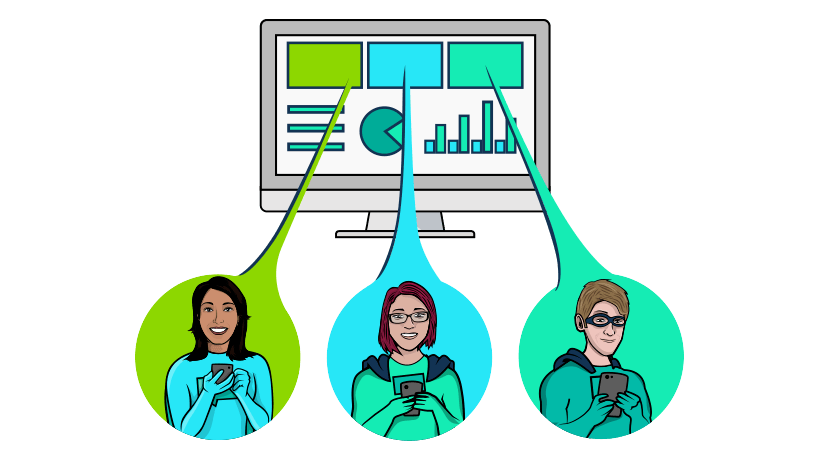Embracing The 70:20:10 Model With Social Learning
How did you learn to swim? Did you read ‘Swimming for Dummies? Did you watch YouTube tutorials and TED Talks on the topic? Did you study Michael Phelps’ biography? Did you complete a series of tests and assessments before dipping a toe in the water?

Probably not. You were probably pushed in at the deep end (quite literally) and forced to learn via experience. Acknowledging this reveals a lot about how we learn and how we take on board new information. It also gives credence to the 70:20:10 framework of learning.
This is a framework that can generate fierce debate. In fact, just the other week, Charles Jennings and Craig Weiss were trading blows on Twitter about whether 70:20:10 was applicable to the wonderful world of online learning.
We believe it is. In fact, we’ve come up with 23 ways to implement and support an informal learning strategy within an online learning environment. Some are quicker and easier than others. We’ve also endeavored to split these initiatives into the relevant section of the 70:20:10 framework.
Let’s get this party started!
70%: Learning Via Experience
Some would have you believe that online learning approaches are, by their very nature, hyperformalized, structured learning experiences. But it doesn’t have to be this way. There are tools out there that give your learners opportunities to play, explore, and drive their own training experiences.
- Whilst rigid learning pathways (or ‘Levels’) have their place in the L&D landscape, there’s also something to be said for self-led learner exploration of training portals. If you load up your Learning Management System with content and let your learners loose on it without providing a predefined journey for them, then you’re essentially indulging in an informal online learning program.
- Any online learning solution worth its salt should provide a risk-free environment for learners to experiment in.
- Scenario-based eLearning helps learners to make decisions and apply their learning in a number of different contexts.
- Learning games and simulations offer experiential learning opportunities. They’re also surprisingly easy to configure.
- Asking learners to upload case studies to their learning portal is a great way to use previous experience to drive learning. Everybody has a camera nowadays, so we recommend asking your team to create short video segments describing how they’ve implemented the training material within their day-to-day role.
- Learning methodologies like ‘The Discovery Method’ use learners’ previous experience to drive their training. The Discovery Method can store learners’ data inputs throughout an eLearning course, tracking their experiences, and requesting analysis when appropriate.
20%: Learning From Observing Others
Online learning works particularly well for this segment of the 70:20:10 framework, as it opens up communication channels across your organization, promotes easy collaboration, and provides ample visibility for your Subject Matter Experts. Here’s how you can help promote observational learning with your online solution:
- Encourage learner-to-learner communication through an organizational social stream.
- Provide opportunities for learners to communicate with one another via a Live Chat (on an individual or group basis).
- Better still, you should encourage your learners to communicate with each other and build networks around specific subject matters. We call this phenomenon ‘Insight Groups’.
- Permit learners to share useful resources on your organizational social streams. This could be anything from a video or a document to a link or a useful infographic.
- Facilitate the creation of learner blogs and wikis.
- Introduce a mentor/buddy system across your learning portal.
- Offer opportunities for your learners to become ‘Subject Matter Experts’. Better still, provide your SMEs with a platform to share their knowledge.
- Your learners should be able to view and answer Frequently Asked Questions. These answers should be visible to other learners.
- Run and monitor team-based learning initiatives throughout the learning platform. For example, why not offer a reward to the first team to successfully complete ‘Assessment X’ with a 100% score?
- Provide a platform that allows your learners to recommend content to other learners.
- Most online learning systems provide opportunities for managers to offer feedback to members of their team. This can be a key driver within an informal learning strategy.
10%: Formal Training
Even a super-basic, out-the-box, no-frills Learning Management System will help you cover off this section of the 70:20:10 framework. The formal elements of online learning include:
- The delivery of eLearning units and video-based learning content to your learners. As you would expect, this can all be reported on.
- Pushing resources, materials, links, etc. to your learners through an online learning portal.
- Setting your learners assignments to complete and then upload to their learning portal for marking.
- Structuring the learning experience by creating courses, curricula, and fully-fledged pathways for your learners.
- Asking your learners to complete a variety of ‘Tests’, ‘Assessments’, and ‘Quizzes’ through their online learning portal. This is a great way of getting information to stick. For bonus points, set your assessments up to automatically push new learning content to respondents whenever they get a question wrong.
- Running webinars/virtual labs. This can be done through your Learning Management System (if the functionality is available), or through webinar tools like WebEx or GoToMeeting.
If you want to know more about how to implement an informal learning strategy, download the free eBook Social Is Super: How Online Learning Can Embrace The 70:20:10 Model.
Related Articles:
- Free eBook – Social Is Super: How Online Learning Can Embrace The 70:20:10 Model
- 5 Ways To Maximize ROI With Social Learning
- A 5-Step Guide To Help You Spread Social Learning Throughout Your Organization
- 7 Essential Social Learning Features You Need On Your Learning Management System








